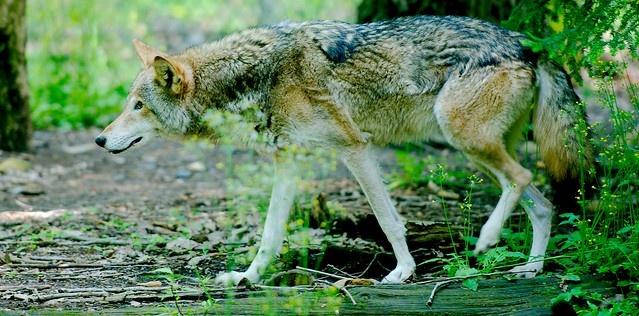When you visit zoos on an area-by-area basis, you find that zoos that participate in species survival plans tend to have recovery populations in different zoos throughout the nation. However, some zoos seem to work more regionally. I haven’t seen red wolves anywhere, but when I did my Virginia/North Carolina trip, I saw at least three zoos with them. I was, at first, not that impressed, until I looked them up once I got home.
These wolves are critically endangered, but in 1980, they were functionally extinct. This means that the wild population was nonviable and it was about to go truly extinct in the wild. Then, in 1987, a captive population was released. This gave a boost to the wild population and an influx of genes that was sufficient to raise the status of the species. A captive population plus re-introduction allowed the species to survive long enough for DNA analysis technology to come along.
DNA testing has shown that the red wolf is a separate species and that the two closest species … the Florida Black Wolf, and Gregory’s wolf have both vanished in the last 100 years.
Today, there is an argument as to whether or not they qualify as a separate species. More advanced DNA testing suggests that thousands of years ago, the species was created through breeding between grey wolves and coyotes and that, today, the species is morphing again because of more breeding with coyotes (as wolves are hard to come by). This goes to show that biology is messy and it’s sometimes hard to draw a firm line around what is and is not a species.
However, is that a reason not to protect them? It makes one wonder if “endangered species” is really the best approach to conservation, or if, like concepts like “complete protein” and “pollution”, it is an oversimplification of science that somehow caught the attention of the world and has created a new framing device that will have to be torn down in future decades.
